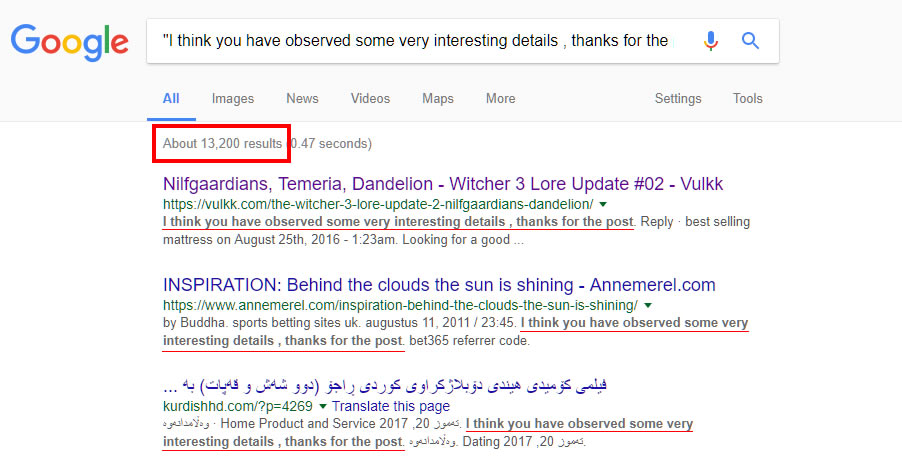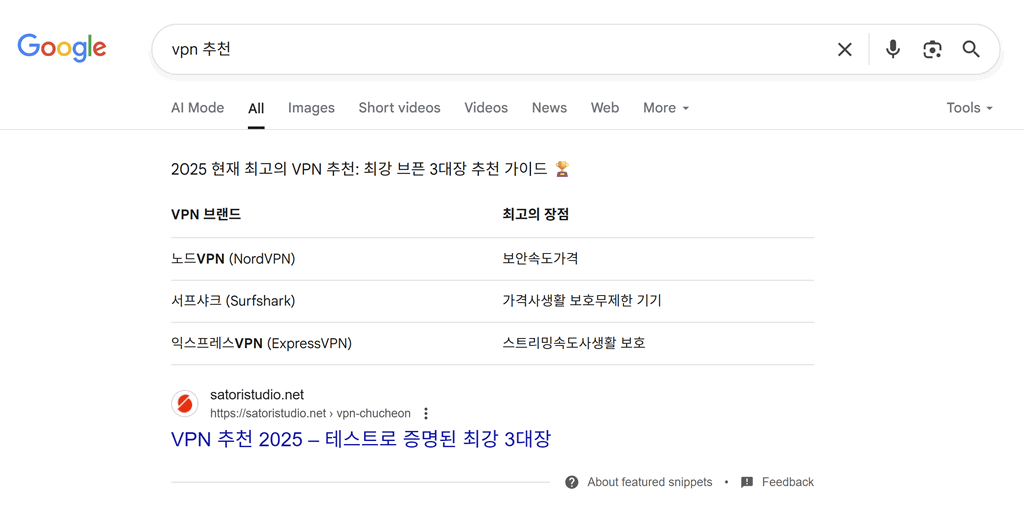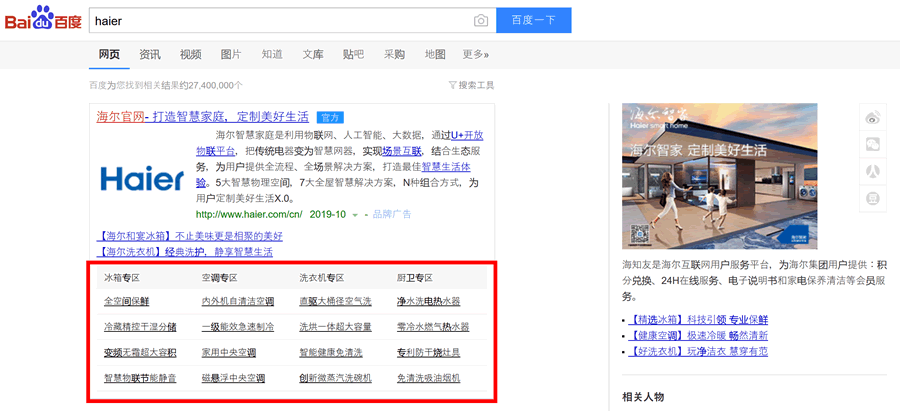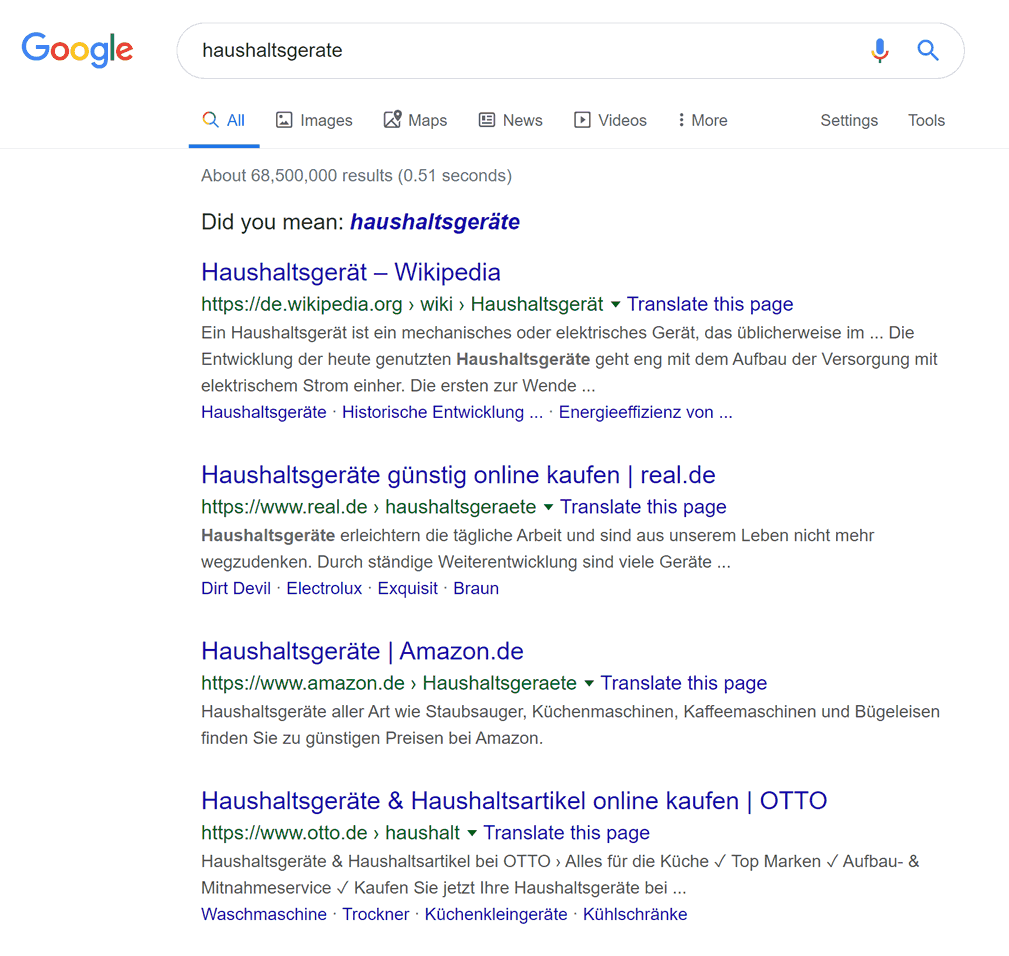☑︎ Panduan ini terakhir diperbarui: January 2026
10+ tahun membangun tautan yang sukses dan ribuan backlink kemudian, kami bisa bilang dengan yakin:
“Backlink masih termasuk faktor peringkat Google yang paling penting.”
Oke sip. Tapi… apa artinya itu di 2026?
Apakah soal dapet mention di blog besar? Jadi pinter di Wikipedia? Atau spam Reddit biar dilirik AI?!
Panduan ini akan memangkas semua kebisingan. Kita akan mendemistifikasi link building dan menjawab pertanyaan kunci:
- Apa sebenarnya link building itu dan kenapa masih penting?
- Apakah link building berubah di era AI saat ini?
- Bagaimana caranya praktik tanpa kena penalti?
- Taktik mana yang works di 2026 dan mana yang buang waktu?
Jadi, entah kamu baru kenal SEO atau butuh reality check untuk strategi yang lagi jalan — ini titik berangkatnya.
Siap? Yuk gas:
Bedanya Link Berkualitas Tinggi vs Rendah
Strategi Link Building Modern
Taktik Link Building Berisiko yang Sebaiknya Dihindari
Penalti Link dan Cara Pulih
Menjaga Profil Link Tetap Natural
Jangan Lupa Link Keluar (Outbound)
Bangun Profil Link yang Tahan Masa Depan
Apa Itu Link Building dan Kenapa Penting di 2026?
Sebelum nyemplung ke tools, taktik, atau penalti, kita butuh definisi. Ini versi yang tidak membosankan:
👉 Link building = membuat website lain menaut ke websitemu.
Sederhana, kan? Tapi saat dilakukan dengan benar, ini adalah pondasi SEO modern — dan kalau keliru, ranking kamu bisa anjlok lebih cepat dari kamu bilang “penalti”.
Kenapa sih link sepenting itu?
Semua kembali ke algoritma awal Google. Alih-alih cuma membaca konten halaman, Google menggunakan backlink sebagai semacam “suara” – asumsi dasarnya: kalau banyak halaman lain menaut ke kamu, berarti kontenmu memang layak ditaut.
Semakin banyak halaman berkualitas yang menunjuk ke halamanmu, semakin tepercaya (dan layak ranking) websitemu terlihat.

Prinsip itu masih berlaku di 2026…
…hanya saja Google sekarang jauh lebih cerdas. Bukan lagi soal jumlah link semata – melainkan soal kualitas, relevansi, dan keaslian link-link tersebut.
Terjemahan bebas: menjejali situsmu dengan backlink meragukan a) tidak akan works dan b) bisa bikin kena penalti.
Itulah kenapa link building modern itu campuran SEO, PR, dan strategi digital — dan 100% layak dilakukan dengan benar.
Mari mulai dengan memahami seperti apa backlink yang “baik” 😇 di mata mesin pencari:
Link Berkualitas Tinggi vs Rendah: Apa yang Benar-Benar Penting?
Intinya, tidak semua backlink diciptakan sama.
Sebagian seperti 🪙 koin emas – mengangkat ranking, membangun otoritas, dan mendatangkan trafik relevan. Sisanya? Kurang lebih seperti mesin faks di tengah badai 💩 Atau lebih buruk, bikin masalah.
Ini yang Google katakan secara resmi:
Setiap link yang dimaksudkan untuk memanipulasi peringkat di Google Search dapat dianggap sebagai bagian dari skema link dan pelanggaran pedoman Google.
Kedengarannya ngeri!
Tapi perhatikan kata kuncinya: “dapat”. Satu kata itu mengubah banyak hal:

Artinya, link building hidup di zona abu-abu yang luas – apa yang works vs apa yang ditandai sering bergantung pada konteks, skala, dan niat.
Aturan praktis yang berguna:
- Link berkualitas tinggi ditambahkan secara editorial — artinya seseorang sengaja menaut ke halamanmu karena memang bermanfaat.
- Link berkualitas rendah ditempatkan tanpa pengawasan — komentar blog tanpa moderasi, direktori murahan, atau profil forum massal yang asal tempel URL.
Lalu, apakah artinya kalau ada yang menyebut websitemu di forum berkualitas buruk, kamu langsung kena penalti?!
Beberapa link yang “abu-abu” tidak akan melukaimu. Manipulasi dalam skala besar yang akan bermasalah.
Google paham kamu tidak bisa mengontrol semuanya. Beberapa link aneh atau berkualitas rendah akan muncul dengan sendirinya — dan itu wajar.
Yang penting: jangan kamu yang membuatnya!
Selain itu, tidak semua link non-editorial itu buruk. Misalnya link dari media sosial, forum, atau platform seperti Reddit dan Quora mungkin buatan pengguna — tapi kalau diperoleh secara wajar dan relevan, tetap ada nilainya (meski memakai nofollow)!
Kuncinya adalah keseimbangan, konteks – dan jangan berlebihan.
Sekarang kita sudah jelas soal garis pemisah “baik vs buruk”, mari bahas apa yang benar-benar works di 2026 👇
Strategi Link Building Modern yang Works di 2026
Kalau harus merangkum nasihat link building terbaik dalam satu kalimat, kurang lebih begini:
Dapatkan link — jangan sekadar mengejar.
Kabar baiknya? Di 2026, masih ada beberapa cara cerdas, skalabel, dan aman dari penalti untuk memperoleh backlink berkualitas.
Ini yang layak waktumu:
Ciptakan Aset yang Layak Ditaut (alias Beri Alasan Orang untuk Menaut)
Tarik ulur permainannya: alih-alih meminta link, bangun sesuatu yang begitu berguna, orisinal, atau insightful sampai orang ingin menaut ke sana.
Format yang terbukti:
- Panduan tak lekang waktu – seperti artikel “how to” atau penjelasan evergreen (kode: postingan ini ;)
- Rangkuman industri – kumpulan statistik, opini ahli, perbandingan tools, dan ringkasan berguna lain.
- Tools gratis – kalkulator, generator, widget. Lihat contoh di bagian tools kami!
Kamu bahkan tidak harus membangun semuanya sendiri – beberapa aset paling “linkable” itu berbasis komunitas (contoh: YCombinator’s Hacker News atau papan lowongan ProBlogger).
Pakai Skyscraper Technique (Tapi Lebih Cerdas)
🏢 Temukan 1 atau beberapa konten terbaik tentang topik targetmu. Lalu… buat versi yang lebih baik.
Bukan sekadar lebih panjang — tapi lebih visual, lebih up to date, lebih actionable!
Ini works karena orang memang sudah ingin menaut ke topik tersebut. Kamu menawarkan opsi yang lebih baik.
Setelah tayang, gunakan Ahrefs atau Semrush untuk membalik jejak backlink kompetitor – lalu tawarkan punyamu sebagai versi unggul.
BONUS kalau kontenmu punya tools, visual, atau data unik yang tidak dimiliki orang lain.
Guest Post (Masih Hidup, Masih Manjur)
✍️ Meski ada yang bilang “sudah lewat”, guest posting tetap works kalau dilakukan benar. Fokus pada website berkualitas dan relevan topik. Cari yang:
- Jadwal publikasinya konsisten
- Kontennya orisinal dan tidak spam
- Punya pembaca manusia (trafik beneran)
Cara menemukannya? Google: "write for us" + niche kamu atau pakai alat seperti Guest Post Tracker.
Infografik, Video & Media yang Gampang Dibagikan
📈 Konten visual bisa menghasilkan link pasif (orang lain menaut tanpa kamu minta) — apalagi kalau merangkum info rumit jadi mudah dicerna.
Infografik, grafik, video pendek, bahkan meme bisa mendatangkan backlink jika di-embed blog lain – pastikan saja mudah menaut ke sumbermu.
Tips: gunakan reverse image search untuk menemukan penggunaan media kamu tanpa atribusi. Lalu minta pencantuman link secara sopan.
Monitor Brand Mention (Lalu Ubah Jadi Link)
🔎 Ada yang menyebut brandmu tapi tidak menaut? Itu kesempatan yang menunggu diambil:
Gunakan Ahrefs Alerts atau Google Alerts untuk melacak penyebutan brand, produk, atau bahkan nama karyawan kunci.
Kemudian hubungi dan minta mereka memberi hyperlink. Mayoritas akan setuju, apalagi kalau konteksnya positif.
Broken Link Building (Klasik tapi Masih Jos)
🧹 Temukan link mati di halaman otoritatif di nismu. Tawarkan konten relevan milikmu sebagai pengganti. Ulangi prosesnya.
Kenapa works: kamu membantu admin situs memperbaiki masalah – meningkatkan pengalaman pengguna mereka.
Di mana menemukan link mati:
- Halaman “Resources” atau daftar link kurasi – semakin banyak link di halaman, semakin besar peluang ada yang mati
- Ahrefs Site Explorer > Masukkan URL situs > Outgoing Links > Broken links
- Ekstensi Chrome seperti Check My Links (sekalian untuk bersih-bersih link mati di situsmu)
Setelah menemukan link mati yang relevan, cocokkan dengan halaman di situsmu — atau buat halaman baru yang lebih baik.
Lalu kirim pesan ramah semacam:
“Halo! Kebetulan saya melihat ada link mati di halaman Anda: [URL]. Saya baru menerbitkan tulisan yang membahas topik serupa — mungkin berguna kalau Anda sedang update.”
***
Itu dia — enam strategi link building modern dan berkelanjutan yang masih disukai Google (dan manusia) di 2026.
Selanjutnya: mari bahas hal-hal yang jangan dilakukan… kecuali kamu hobi bikin bencana SEO 👇
Taktik Link Building Berisiko yang Bisa Merusak Ranking
Setelah bahas yang works, sekarang kebalikannya:
Ada taktik-taktik link building yang sudah ketinggalan zaman, meragukan, atau berbahaya sampai-sampai lebih mungkin memicu penalti daripada membantu ranking.
Dan ya – masih ada yang memakainya di 2026 🙈 Ini para “tersangka” utama:
Spam Komentar
💬 Kamu pasti pernah lihat: komentar generik “Artikelnya bagus!” yang disisipi backlink asal.
Kebanyakan kolom komentar blog sekarang:
- Menggunakan
nofollowsecara default (Google mengabaikannya untuk ranking) - Dimoderasi (spam langsung dihapus)
- Atau lebih parah — jadi kubangan link outbound murahan
Bayangkan kamu pemilik blog dan mendapati komentar seperti ini:

Dan ini yang muncul saat frasa persisnya dicari di Google:

🚫 Duplikat, 🚫 berbahaya… dan overall tidak cerdas – spam komentar massal bukan hanya tidak berguna, tapi juga cara cepat membakar reputasi domainmu.
Spam Forum
🧵 Menyisipkan link di thread forum, bio, atau signature memang dulu bekerja… waktu dinosaurus masih ada.
Sekarang? Kebanyakan platform forum:
- Memberi
noindexataunofollowpada link keluar - Punya moderator manusia dan AI (plus alat anti-spam)
- Memberi otoritas link yang nyaris nol meski kamu lolos
Kalau forumnya tidak dimoderasi? Lebih buruk lagi. Google cenderung tidak percaya pada domain seperti itu – yang artinya kamu memang tidak ingin punya link di sana.
Direktori Berkualitas Rendah
📂 Masih lihat jasa Fiverr “30 backlink 25 dolar”? Tergoda nyoba? Sebaiknya jangan.
Backlink direktori mungkin bermanfaat di 2008. Hari ini, kebanyakan hanya memancarkan sinyal:
“Situs ini akan menaut ke siapa pun, kapan pun, di mana pun.”
Itu bukan “tetangga” yang bagus; bahkan direktori berbayar (dengan ulasan editorial) tetap berisiko – kecuali memang terkenal, sangat relevan, dan dihormati di nismu.
Private Blog Networks (PBN)
🕸 PBN adalah sekumpulan website yang dibuat untuk saling menaut demi mendongkrak ranking secara artifisial.
Biasanya memakai domain kedaluwarsa dan (kurang) disamarkan sebagai blog independen.
Google sudah lama “menyapu” PBN sejak 2014 – dan sekarang makin pintar mendeteksinya.
Tanda-tanda “bau PBN”:
- Konten dangkal atau hasil AI tanpa engagement
- Nama domain tidak alami dan tidak nyambung topik
- Minim multimedia (tanpa gambar/video orisinal)
- Profil backlink aneh: pertumbuhan stagnan, anchor spam, dsb
- Satu orang menawarkan link dari 10+ blog berbeda
Mau cek cepat apakah sebuah situs dulunya berbeda? Pakai Wayback Machine untuk melihat tampilannya beberapa tahun lalu. Sering bikin kaget.
Kalau domainnya dulu toko ban berbahasa Mandarin dan sekarang tiba-tiba jadi “blog marketing” – sebaiknya jangan ambil link-nya…
***
Singkatnya:
Kalau rasanya seperti jalan pintas — kemungkinan besar memang begitu. Dan jalan pintas di SEO bisa mahal harganya, serta butuh waktu berbulan-bulan untuk pulih.
Berikutnya: kalau terlanjur kena penalti, apa yang terjadi dan bagaimana memperbaikinya 👇
Penalti Link dan Cara Pulih Jika Kamu Kena
Jadi… apa yang terjadi kalau Google tidak suka link-linkmu?
Kadang: tidak terjadi apa-apa.
Kadang lain: trafik jatuh tajam sampai jantung ikut ambyar –

Selamat datang di dunia penalti link.
Kabar baik dulu: di 2026 Google jauh lebih sering mengabaikan link buruk ketimbang menghukumnya.
Tapi kalau terlalu parah – terutama jika kamu membangun link spam dalam skala besar – Google masih bisa bertindak:
Algoritmik vs Manual
Ada dua cara situsmu bisa kena tamparan –
- Algoritmik – dipicu otomatis oleh sistem ranking Google (mis. Penguin). Tidak ada manusia. Tidak ada peringatan. Tiba-tiba ranking turun.
- Tindakan manual – tim Webspam Google meninjau profil linkmu dan menilai ada yang janggal. Kamu akan dapat notifikasi di Google Search Console kalau ini terjadi.
Bedanya?
Manual = kamu diberitahu
Algoritmik = kamu menebak-nebak 😬
Jadi kalau trafikmu tiba-tiba anjlok tanpa perubahan on-page atau masalah indexing – bisa jadi ini penalti.
Cara Pulih dari Penalti Link
Kalau kena, jangan panik. Ada jalan pulang – butuh sedikit bersih-bersih 🧼 Ikuti langkah ini:
- Audit backlink
Pakai Ahrefs Site Explorer atau Google Search Console untuk unduh daftar backlink lengkap. - Identifikasi link beracun
Cari hal-hal seperti:- Link dari situs spam atau tidak relevan
- Anchor text aneh (contoh: “obat kuat murah sekarang”)
- Link dari link farm atau PBN yang jelas
- Coba hapus manual
Hubungi pemilik situs dan minta penghapusan dengan sopan (ini menunjukkan itikad baik ke Google) - Buat file disavow
Untuk link yang tidak bisa dihapus, cantumkan dalam file.txtdan unggah via Disavow Tool. Formatnya per baris:domain:example.com - Ajukan permohonan peninjauan
Jika penalti manual, buka Search Console > Manual Actions, jelaskan apa yang sudah dibersihkan dan kenapa tidak akan terulang.
Kalau filternya algoritmik (tanpa notifikasi GSC), kamu harus menunggu. Proses Google memindai ulang profil link bisa mingguan hingga bulanan.
Penting: Disavow tidak bekerja instan! Tetap pantau trafik dan ranking selama proses.
Dan ya, jauh lebih mudah untuk menghindari semua drama ini sejak awal:
⚠️ Jangan bangun link massal dari sumber meragukan
⚠️ Fokus pada link editorial dan aset bernilai
⚠️ Jaga anchor text tetap beragam dan natural
⚠️ Monitor profil backlink tiap 1–2 bulan
…Ngomong-ngomong soal menjaga profil link tetap natural – mari lihat cara menghindari sorotan negatif Google sejak awal 👇
Cara Menjaga Profil Link Terlihat Natural
Lewat dari penalti itu mungkin saja. Tapi tidak perlu pemulihan itu lebih baik 🤷
Kuncinya: bangun profil link yang terlihat natural — seperti yang Google harapkan dari situs tepercaya.
Artinya apa? Baik di level link tunggal maupun secara keseluruhan:
Seperti Apa Link yang Natural
Setiap backlink harus terasa “pantas” di tempatnya. Ini sinyal-sinyal yang Google gunakan untuk mengendus link mencurigakan:
- Posisi di halaman: link terbaik muncul di area konten utama, bukan diselipkan di footer, sidebar, atau menu.
- Konteks sekitar: backlink legit tertanam dalam paragraf relevan, bukan mengambang dalam daftar 50 URL acak.
- Anchor text: exact-match keyword dulu keren… sekarang lampu merah. Pakai brand, istilah umum, atau frasa natural.
- Keterlihatan: link tersembunyi (warna disamakan dengan background, font mungil) adalah tanda manipulasi. Link yang baik terlihat jelas dan jelas didukung.
- Potensi trafik: jika halaman perujuk punya trafik nyata dan ada klik yang masuk, itu sinyal bagus – bagi kamu dan Google.
Seperti Apa Profil Link yang Natural
Sekarang lihat dari helikopter.
Apakah profil backlink secara keseluruhan masuk akal? Atau lebih mirip aksi SEO “nakal”? Perhatikan:
- Diversitas anchor – Campuran sehat anchor bermerek, generik (“klik di sini”), dan long-tail jauh lebih bagus daripada 100 anchor super spesifik yang aneh.
- Dofollow vs nofollow – Tidak semua link harus meneruskan “juice”. Campuran keduanya terlihat normal. Hampir tidak ada
nofollow? Mencurigakan. - Distribusi kualitas link – Situs nyata dapat lebih banyak link dari blog kecil daripada Forbes. Itu wajar – jadi jangan kejar yang “domain rank tinggi” saja.
- Pertumbuhan dari waktu ke waktu – Lonjakan backlink mendadak itu oke — kalau paralel dengan publikasi media, peluncuran produk, atau momen viral. Kalau tidak, bangun bertahap dan konsisten.
Jika profil linkmu terasa organik, beragam, dan “didapat”, kemungkinan besar aman.
Kalau ragu, audit rutin dengan Ahrefs Site Explorer.
Sebelum tutup: satu hal yang sering dilupakan dalam strategi link building 👇
Jangan Lupa Link Keluar (Outbound)
Ingat: link building bukan cuma soal apa yang mengarah ke kamu – tapi juga apa yang kamu arahkan.
Meski bukan sinyal ranking langsung, link keluar ikut membentuk tingkat kepercayaan, relevansi topik, dan otoritas keseluruhan situsmu di mata Google.
Siapa yang kamu “gauli” banyak bicara tentang kamu – berlaku juga untuk website.
Begini cara menaut keluar tanpa menembak kaki sendiri:
- Tetap relevan: tautkan ke konten yang benar-benar nyambung dengan halamanmu. Jangan tautkan blog asuransi mobil dari panduan berkebun.
- Pilih sumber berkualitas: otoritatif, terbaru, dan aman. Hindari situs spam, domain diretas, atau yang terlihat terbengkalai sejak 2004.
- Jangan sembunyikan link: mesin pencari membaca kode, bukan layout. Trik styling untuk “menyembunyikan” link keluar (font kecil, warna sama) bisa berbalik negatif.
- Perangi spam komentar: link spam buatan pengguna di situsmu? Masih tanggung jawabmu! Gunakan moderasi, nofollow, atau plugin agar tetap bersih.
- Perbaiki link keluar mati: link mati = pengalaman buruk = sinyal kepercayaan turun. Cek berkala dengan Check My Links.
Dan tidak – menaut keluar tidak akan “membocorkan SEO juice” kalau dilakukan natural. Bahkan link keluar yang cerdas bisa meningkatkan relevansi dan otoritas topikalmu.
Intinya jangan lebay. Tautkan layaknya manusia, bukan bot yang kejar kuota.
Bangun Link yang Tahan Lama
Jadi, apa yang kita pelajari?
Backlink tetap penting – banget. Tapi di 2026, kurang soal kuantitas, lebih soal kualitas, relevansi, dan trust:
Tinggalkan jalan pintas yang meragukan.
Fokus pada konten yang layak ditaut.
Perlakukan profil link sebagai investasi jangka panjang:
Link berkualitas butuh waktu untuk dibangun, tapi merekalah yang akan memberi trafik gratis dan bertahan melewati update Google berikutnya.
Main cerdas, konsisten, dan websitemu akan berterima kasih.
Ada pertanyaan? Mau berbagi cerita sukses (atau horor) link building? Tinggalkan komentar di bawah 👇
Kalau panduan ini membantu, jangan sungkan — bagikan ke sesama pegiat SEO atau founder startup ;)









